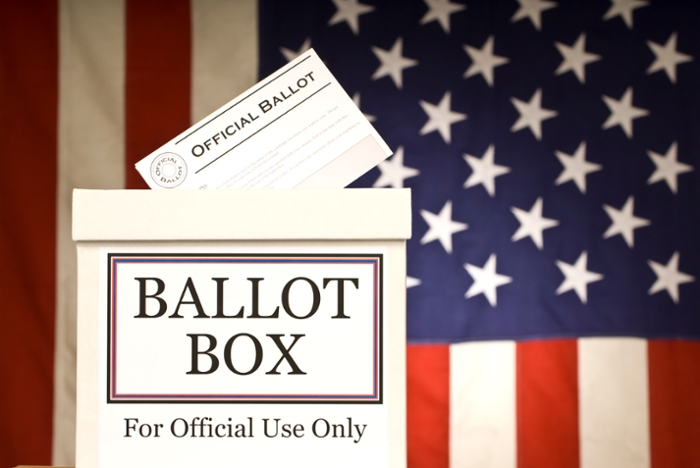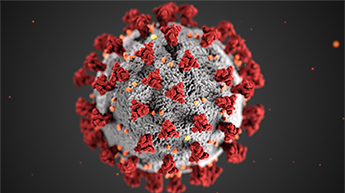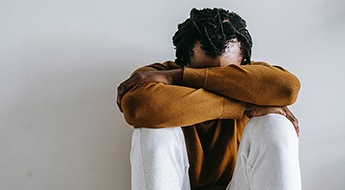Experts Eye Election, Offer Reflection
IPR faculty share research-fueled insights on key aspects from polls to political parties
Get all our news
There is little doubt that the 2016 campaign will go down in history as among the most contentious and unexpected in history.”
James Druckman
IPR political scientist

Ten IPR faculty members share what their research reveals about the 2016 election.
After three months of intense campaigning following the Republican and Democratic conventions, both of the major-party nominees now find themselves in the final sprint toward the Election Day finish line on November 8. To take stock of some of the election’s structural factors, IPR asked 10 of its experts in the fields of political science, economics, social policy, and sociology to share their thoughts: What does their research reveal about five key features of presidential elections—candidate debates, polls, voter blocs, election laws, and political party dynamics?
Polls | Debates | Key Voter Blocs | Voting Laws | Political Parties
Are political polls informative?
Even before the candidates have declared their intent to run up until the last seconds of voting, pollsters are frenetically testing the nation’s political pulse. From CNN and Gallup to Reuters/Ipsos and Fox News, it seems their number is multiplying, and this proliferation is clouding voters’ judgments as to which might be more trustworthy, according to IPR political scientist James Druckman.
Druckman, an expert in public opinion and survey methodology, explains that even polls from credible sources using state-of-the-art techniques are not as predictive as many would like. The problem is that drawing a representative sample of all voters is very difficult, as many people decline to participate in polls, and even determining who is likely to vote can be tricky.
Consequently, Druckman points out that the polls’ margin of error is much higher than commonly reported. A 2016 study estimated the true margin of error for election polling to be between 6 and 7 percent, meaning that if a candidate polled at 54 percent, public support might actually lie in a wide swath between 47 and 61 percent.
For IPR economist Charles F. Manski, probabilistic polling might offer one way to address some of this uncertainty. Instead of just asking whether or not an individual would vote for a candidate, this method asks people how likely—or, what’s the percentage chance—they expect to cast a vote for a particular candidate.
“This idea of asking people to express uncertainty in a quantitative way eliminates the need for pollsters to distinguish between likely and unlikely voters, since people tell you that themselves in their answer,” Manski said.
Further refined by Manski and Adeline Delavande of the University of Essex, probabilistic polling was picked up in the 2012 election. Currently, the University of Southern California has teamed up with the Los Angeles Times to deploy it in their polling for the 2016 election.
Whatever the poll or method, for Druckman, the bottom line is that polling is tough and rife with credibility issues. Nonetheless, polls still serve an important purpose for helping citizens understand an election.
“Just interpret with caution and know there is uncertainty,” Druckman advised.
While polls help to understand voters’ views of the candidates, debates help voters come to know the candidates. Of all the candidate debates, those by U.S. presidential candidates are among the most watched broadcasts in the world—along with the Olympics, World Cup, and Super Bowl—notes journalism professor and IPR associate Craig LaMay. But how, if at all, do they affect an election?
LaMay, who co-authored Inside the Presidential Debates (University of Chicago Press, 2008), argues that the debates present voters with a unique view of the candidates during this most contentious and unusual election. The debates are “the only place in the modern campaign where the candidates speak at length and extemporaneously to voters, armed only with their character and their intellect,” he said.
The debates might not change voters’ minds, despite what candidates often believe, he concludes, but they do “energize” voters and motivate them to make campaign contributions and work to get out the vote.
Voters are influenced not just by the content but by the language candidates employ in the debates, as shown by recent research from IPR associate Brian Uzzi, a management and strategy professor, and his co-authors. When a presidential candidate matches certain features of an opponent’s language during a debate, it can lead to higher poll numbers.
Their study of the presidential candidates’ language in the debates between 1976 and 2012 focuses on “linguistic style matching” of function words such as conjunctions, quantifiers, and other supporting parts of speech. Such matching makes the candidate’s arguments more persuasive and easier for viewers to understand, thus raising their standing with voters and in the polls.
At the end of the day, polls seek to capture who will vote on Election Day and for whom. But a deeper question remains: What issues are driving certain blocs of voters to the polls this election?
Through his ongoing research, political scientist and IPR associate Thomas Ogorzalek highlights a distinct “urban-rural” divide. Urban voters are much more likely to vote Democratic, while rural voters are more likely to vote Republican. Ogorzalek also points to how shifting dynamics—such as suburbs becoming more diverse and suburban voters moving into Democratic columns—could reshape the electoral bases of the two parties.
How can presidential candidates appeal to voters in different geographic areas? Ogorzalek points to how certain issues—such as investment in public goods like infrastructure and education, and moderate positions on social issues—are more important for metropolitan communities, while messages of smaller government have a distinctly rural appeal.
Thus, understanding key geographic and demographic shifts—for example, examining how shifts of more African-Americans and immigrants to the suburbs relate to their positions on race and immigration—is an important part of predicting voter attitudes and behavior.
One of the most discussed voting blocs of this election cycle has been that of working-class whites, whom many see as contributing to the rise of “anti-establishment” candidates like Donald Trump and Bernie Sanders. According to research by IPR sociologist Monica Prasad, between one-third and one-half of the white working class in America votes Republican, a trend that has held steady for several decades.
Through in-depth interviews with them, she and her colleagues dig into the reasons that white-working class voters primarily vote Republican. Prasad also points out that many of Donald Trump's economic policies are not consistent with traditional Republican economic policies, such as his antipathy toward free-trade agreements like NAFTA. Still, many white, working-class voters have cast their support to him for president.
“One of the most interesting developments of this election … is the repudiation of most of the Republican economic agenda by the white working class,” Prasad noted.
Her research, along with that of Ogorzalek, suggests that important shifts are taking place among key voting blocs in the United States—from suburban voters to the white working class—and that understanding these shifts could be vital to appealing to these groups in 2016 and beyond.
How do laws shape voter participation?
In addition to the voting blocs mentioned above, millennials represent another key group but one consisting of voters who typically cannot be counted on to turn out in great numbers. Past research has attributed their low turnout to a lack of interest in the issues or knowing enough about candidates. But social policy professor and IPR associate Dan Lewis says emerging research—including his own on the Northwestern campus—might prove otherwise.
Lewis, who is founding director of Northwestern’s Center for Civic Engagement, explains that millennials’ low participation is attributable to how often young people have changed their addresses, especially college students who are incessantly moving, from home to campus, then off campus, with some even keeping their parents’ mailing address.
“The more you change your address, the less likely you are to vote, no matter what age you are,” Lewis said.
Another area that can have an impact on who votes revolves around early-voting laws: More than 37 states have passed such laws since the 1970s, and the presidential candidates are actively encouraging their supporters to go out and vote early, said Mara Suttmann-Lea, an IPR graduate research assistant and PhD candidate in political science.
Past research has mainly focused on how such laws affect voter turnout. But in research for her dissertation, Suttmann-Lea uncovers a more critical impact—how they affect political campaigns.
She pointed out that early voting does not change election outcomes in and of itself: Though they cast their ballots earlier, early voters are more than likely voting for the same candidate they would choose on Election Day.
Rather, early voting changes campaign mobilization strategies and how candidates allocate their resources. In highly contested races, like this year’s presidential election, she said, campaigns with more resources can mobilize their supporters to vote early, which then frees up their remaining resources to target undecided voters.
So, how can the United States increase voter turnout and participation for these groups? Lewis points to nonpartisan voter registration as one remedy—and at Northwestern, his center launched an effort that resulted in 96 percent of the 2016 freshman class getting registered. Online methods that make it easier to get registered or vote absentee can also help, he added.
Can elections change how political parties function?
Stepping back from individual voters for a macro-look brings the functioning of political parties into view. For example, how do parties fare when their leader, the president, is in the White House? According to IPR political scientist Daniel Galvin, an expert on presidential politics and parties, “Presidents either help their party or they hurt their party. But they’re never neutral.”
While presidents are often depicted as neglecting their parties once in the Oval Office, he finds that presidents can work as party builders, especially if they see their party in a weakened position.
In the case of the 2016 election, both Donald Trump and Hillary Clinton have greatly benefited from their party’s resources during the election season, Galvin says. But the question is, whichever of the two is elected, will that candidate as president seek to bolster his or her respective party once in office—through fundraising or by raising the party profile on issues? Or will they damage their party by ignoring it?
The election will also affect how the parties govern even before the 45th president is sworn in, IPR political scientist Laurel Harbridge Yong suggests. An expert on legislative compromise and bipartisanship, Harbridge Yong says that the outcome of the 2016 presidential election, as well as down-ballot races in the House and Senate, could lead to increased activity in the lame-duck session between November 9, the day after the election, and January 20, the presidential inauguration. Outgoing members of Congress could see this period as an opportunity to compromise without fear of being voted out of office, she notes.
Whether the 2016 election will lead to any relief from legislative gridlock is less certain. Unless one of the parties can step away with a majority in the House and the Senate—as well as the presidency—Americans will likely experience more divided government in 2017. As Harbridge Yong explains, divided government and a legislative process that “favors partisan disagreement” have rendered the past years “highly unproductive.”
Summing up, “There is little doubt that the 2016 campaign will go down in history as among the most contentious and unexpected in history,” said Druckman, who also chairs IPR’s research program on politics, institutions, and public policy and is associate director of IPR, “but figuring out what this means for public policy is a question that will keep us all busy in the election’s aftermath.”
James Druckman is the Payson S. Wild Professor of Political Science and an IPR fellow. Charles F. Manski is the Board of Trustees Professor of Economics and an IPR fellow. Craig LaMay is associate dean of journalism and an IPR associate. Brian Uzzi is the Richard L. Thomas Professor of Leadership and Organizational Change at the Kellogg School of Management and an IPR associate. Thomas Ogorzalek is assistant professor of political science and an IPR associate. Monica Prasad is professor of sociology and an IPR fellow. Dan Lewis is professor of human development and social policy and an IPR associate. Mara Suttmann-Lea is an IPR graduate research assistant. Daniel Galvin is associate professor of political science and an IPR fellow. Laurel Harbridge Yong is associate professor of political science and an IPR fellow.
Published: October 28, 2016.


